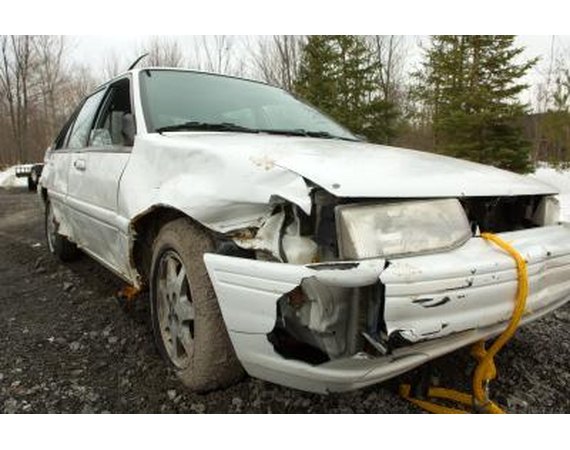
The "blue book value" of a used car is a reference to "Kelley Blue Book." Published since the 1920s, the "Kelley Blue Book" has long been the go-to source to determine the value of a used car. You can even use the VIN, or vehicle identification number, of a car to determine the Blue Book value. These numbers, which have been assigned to every individual car since 1980, were standardized to keep people from trying to sell a car as one make and model when, in actuality, it was another.
Locate the VIN Number
Locate the VIN number for the vehicle you're trying to appraise. This number is located on a number of different surfaces of the car, but the easiest place to look for it is stamped to metal tag fastened to the inside of the dashboard, right where the windshield meets the hood. The VIN is also located on the engine block and sometimes on the inside of the driver's side door. If you have any paperwork for the car, such as auto loan or insurance papers, these will also usually have the VIN.
Determine Make and Model
Use a free VIN service, such as Motoverse (see "Resources") to find the model and make of the car from the VIN. Note that this will not work for pre-1980 model cars, as that was before the VIN system was standardized throughout the world. Many auto manufacturers will also encode more specific information into the VIN, such as the engine type, any kind of safety features and where the car was manufactured.
Examine the Car
In order to accurately get a price from the Blue Book, you'll need to ascertain the condition of the car. The Blue Book rates cars on a scale ranging from poor, fair, good and excellent. The better the rating, the more the car is worth. One way you can do this is by checking the accident history of the vehicle. There are a number of online vendors that will tell you if the car has ever been in an accident by running a check on the VIN.
Determine the Car's Blue Book Value
Once you have the make and model number, you can plug it into the "Kelley Blue Book" site (see "Resources") to determine the Blue Book value of the car. If you were able to determine any other details about the car from the VIN, such as the engine type, plug these options into the Blue Book webform. This will help you get a more accurate value for your car.


















